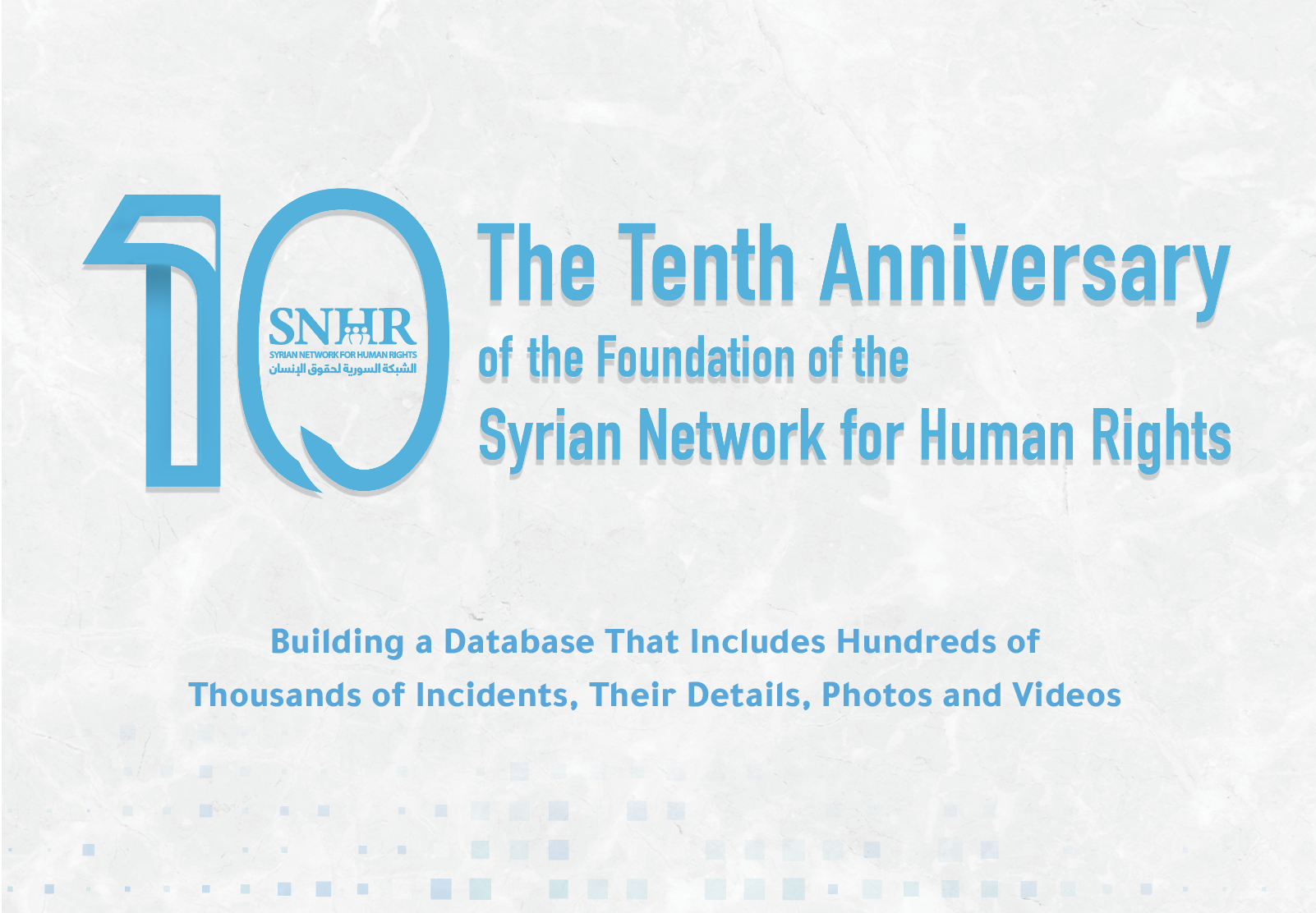Building a Database That Includes Hundreds of Thousands of Incidents, Their Details, Photos and Videos

Paris – Syrian Network for Human Rights:
The Syrian Network for Human Rights (SNHR) was founded at the beginning of June 2011, a few months after the start of the popular uprising for freedom, in March of the same year. From the earliest days, the Syrian regime confronted peaceful protesters with live bullets, arrests, enforced disappearances and torture, leading Fadel Abdul Ghany to come up with the idea of establishing a network of activists to document victims and detainees on a daily basis which could issue periodic reports for submission to UN agencies, international organizations and the media. A number of activists, both male and female, who shared his belief in the importance of this work, joined voluntarily, with many fearing that the names and details of the victims would be lost due to their large number and the multiplicity of their locations, especially as the demonstrations against the Syrian regime quickly grew and expanded, with the regime reacting by increasing its brutal efforts to crush them via killings, arrests and murderous repression of every form.
Initially, the SNHR’s activities began on a small scale and were limited to preparing a brief daily report on the human rights situation in Syria, including incidents of killing and arrest.
A few months later, this vital work progressed to preparing cumulative reports based on this daily documentation of rapidly escalating events, with SNHR starting to issue monthly reports, the first of which was the Victims’ Death Toll report, providing details on the death toll of Syrian citizens killed during the previous month, their distribution according to the location of each killing, and the death toll among children and women. With the team members undergoing a number of human rights and legal training courses, its activities expanded to include working on thematic reports dealing with specific issues such as documenting massacres, sieges, live bombings, the use of new types of weapons and the number of times they were used, as well as the places they targeted. In addition to the Syrian regime, multiple parties have also emerged on the scene of the Syrian conflict, that practiced other types of violations and persecuted those working in the field of documenting their violations, increasing the intensity and difficulty of this already dangerous work.
Our work has evolved over the years, as we have learned from our mistakes, and faced numerous immense challenges, many of which are still present in one way or another. Over time, we have assembled an empowered and highly skilled team with extensive experience in documenting violations on a daily basis, as well as expanding our network of contacts with residents, local activists, media workers, medical personnel, and Civil Defense teams. In order to further develop our relations with the victims and their families, we designed forms on different types of violations, which are now available on our website, enabling survivors and victims’ family members to complete and submit them, after which we communicate with them to help however we can. The regular use of our news and reports by media has helped increase awareness of our work and boost our reputation in the Syrian community, with the confidence and trust among the victims, their families, eyewitnesses and local activists remaining, as always, key to our main work.


